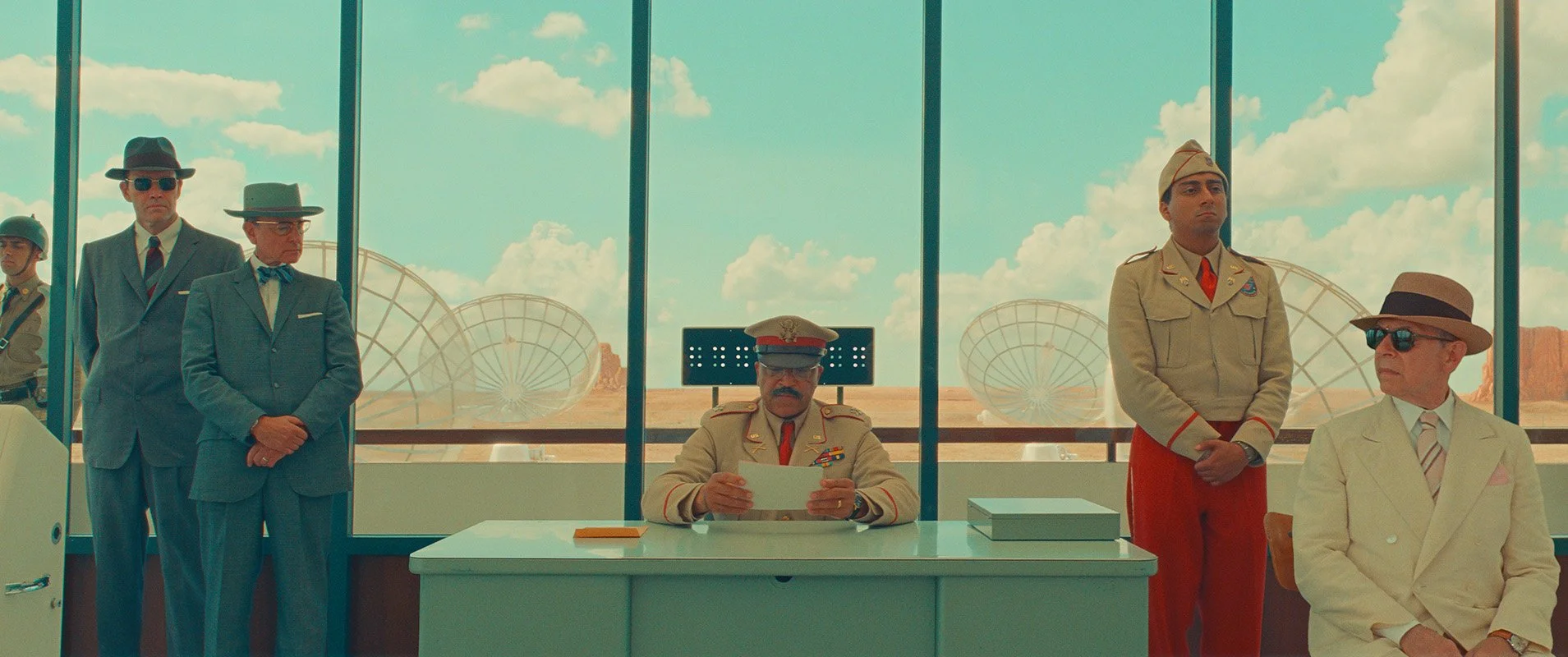Asteroid City
Directed by Wes Anderson
Running time: 1hrs45 | REVIEWED BY CATHERINE BRAY
Asteroid City, directed by Wes Anderson
Towards the end of Wes Anderson’s 1950s-set meta-fiction Asteroid City, Adrien Brody’s character, who is a theatre director, tells one of his actors (Jason Schwartzman) that the role he is playing doesn’t require “all this business” – the business in question being the actor’s pipe, beard, lighter and numerous other quirks and tics and actorly flourishes. I’m not quite sure how knowing or self-deprecating this is supposed to be, but it’s an observation that, in macrocosm, applies beautifully to Anderson’s own oeuvre.
His debut, Bottle Rocket (1996), had the youthful courage of its convictions, realised with an off-hand sense of style that helped it fizz. Rushmore (1998) would introduce more of the director’s signature moves, but the thing that I most remember about it is the wounded grace of the central performances from Jason Schawartzman, Olivia Williams and Bill Murray. The Royal Tenenbaums (2001) is perhaps his best film – sure, it’s plenty quirky, but with characters so lived-in and deeply felt that the gilded frame in which they appear serves to amplify their humanity by contrast.
I’m not going to get into what I’ve felt about some of his films since then, but suffice to say I wish he’d take Brody’s character’s advice to go a little easier on “all this business”. The matching luggage, the elaborate baked goods, the typography, the W. Heath Robinson doohickeys, the medley of aspect-ratios, the children who speak like adults, the adults who speak like children, the graphic design flourishes, the compositional symmetry, the twinkly score, the arch camerawork, the retro clothing, the monogrammed everything… what does it all add up to? For thousands of people, the answer is: pure heaven.
For me, the effect of much of this is to place careful layers between myself as a viewer and the characters Anderson creates. These outer layers of his filmmaking are easy-to-parse, giving critics and audiences (and the A.I. currently remixing his style for social media consumption) nice simple ways to engage with the work. This has the effect of protecting the heart of his films from deep scrutiny; people often get too caught up in the aesthetics (whether they love or hate those aesthetics) to think as much as they otherwise might about what lies beneath. The Wes Anderson look is a textured, watermarked, 600gsm invitation to splash around in the shallows, stick to the small talk.
Asteroid City made me wonder, for the first time in a while, about the more complicated soul that exists in this body of work, beneath the Andersonian layers. It made me itch to free the script and actors from The Aesthetic, which sometimes feels like an expression of insecurity, as if Anderson doesn’t trust that his narratives and characters are interesting or worthy of love by themselves. Which is not to imply that the aesthetic is not sincere. I’m sure Anderson genuinely adores a nice set of retro suitcases – who doesn’t? But his love of the aesthetic he has wrapped his films up in, adding more layers, year by year, until the films are cocooned in stylistic choices, also feels a bit like camouflage.
I have to confess I’m more interested in what is underneath all this stuff. It seems to me that there could be such a thing as a stripped-back, almost Dogme 95 version of Asteroid City. It would have at its exposed heart a man grieving the loss of his wife, unable to articulate that grief while simultaneously testing the waters with a new love. It would fearlessly express the tensions between writing life, performing life and actually living life. It would be about the largeness of the universe, about the way that the perimeters of what we thought we knew about the world and our existence in it are, always and forever, subject to sudden expansion. It would live and breathe and be vulnerable. I think it would be rather wonderful, this movie that will no-one will ever see.
ASTEROID CITY (2023) Written by Wes Anderson, story by Wes Anderson, Roman Coppola | Shot by Robert Yeoman | Edited by Barney Pilling
Playing in Competition at the 76th Cannes Film festival
